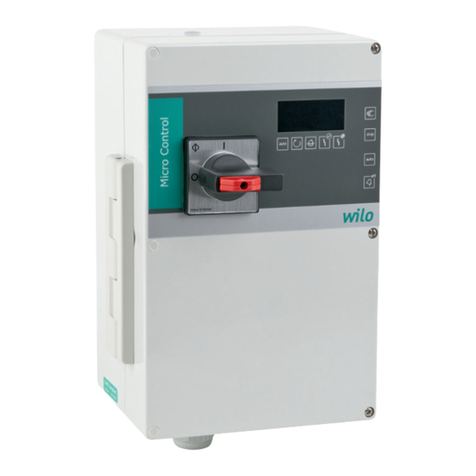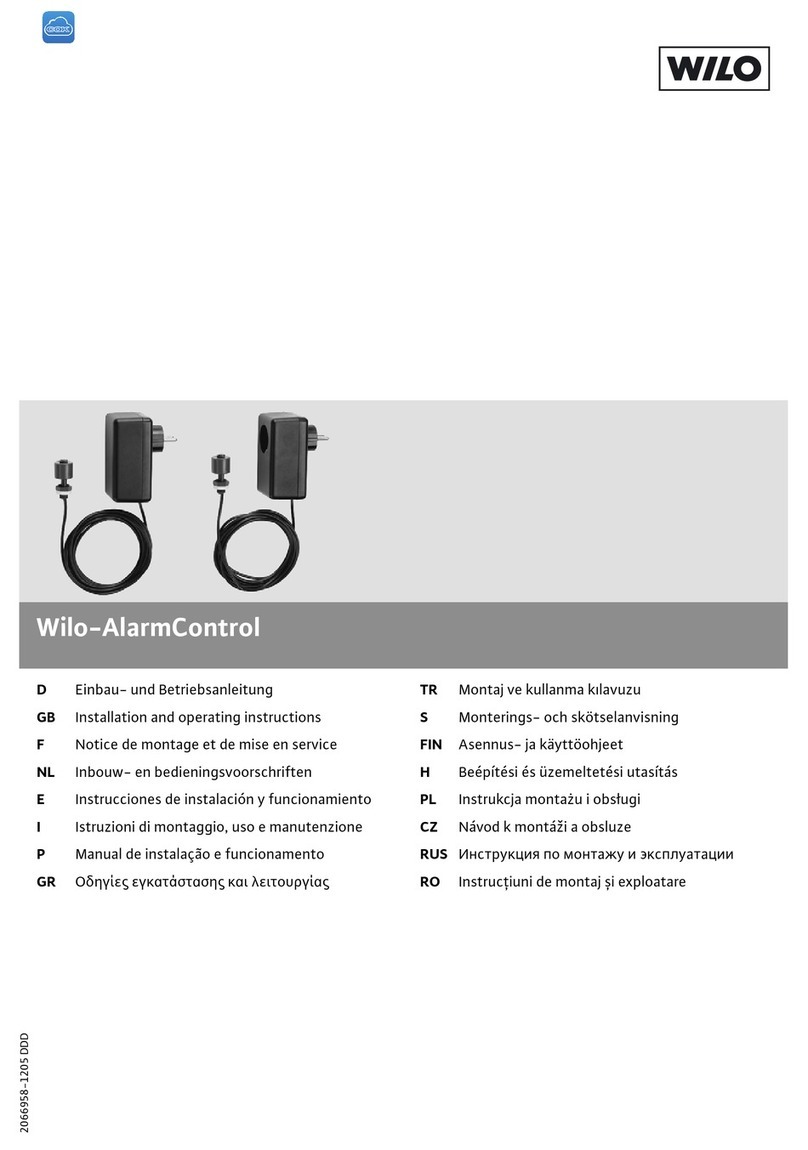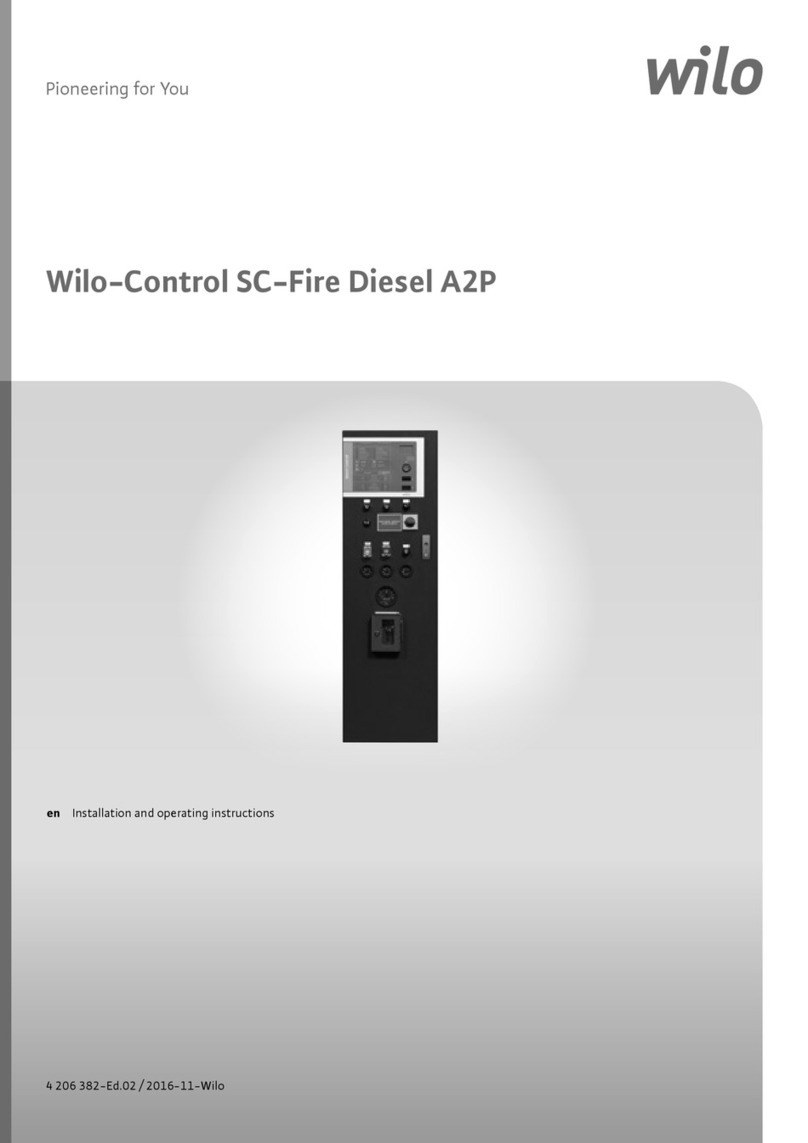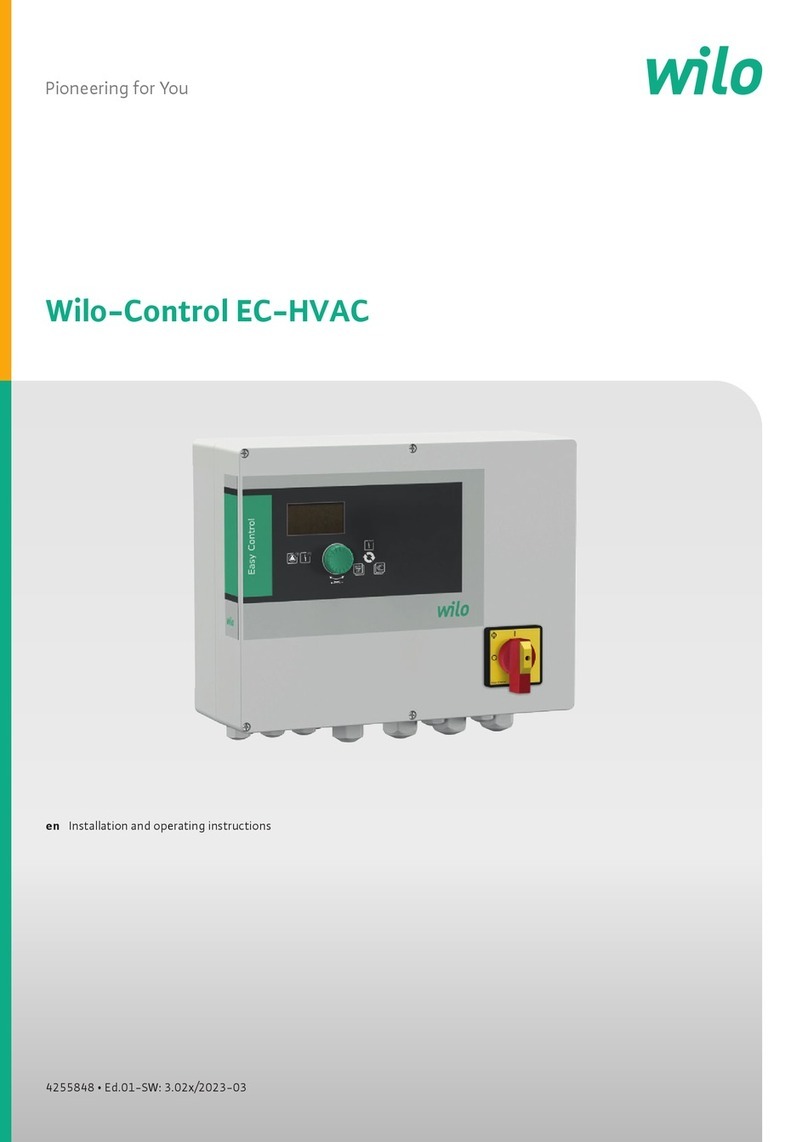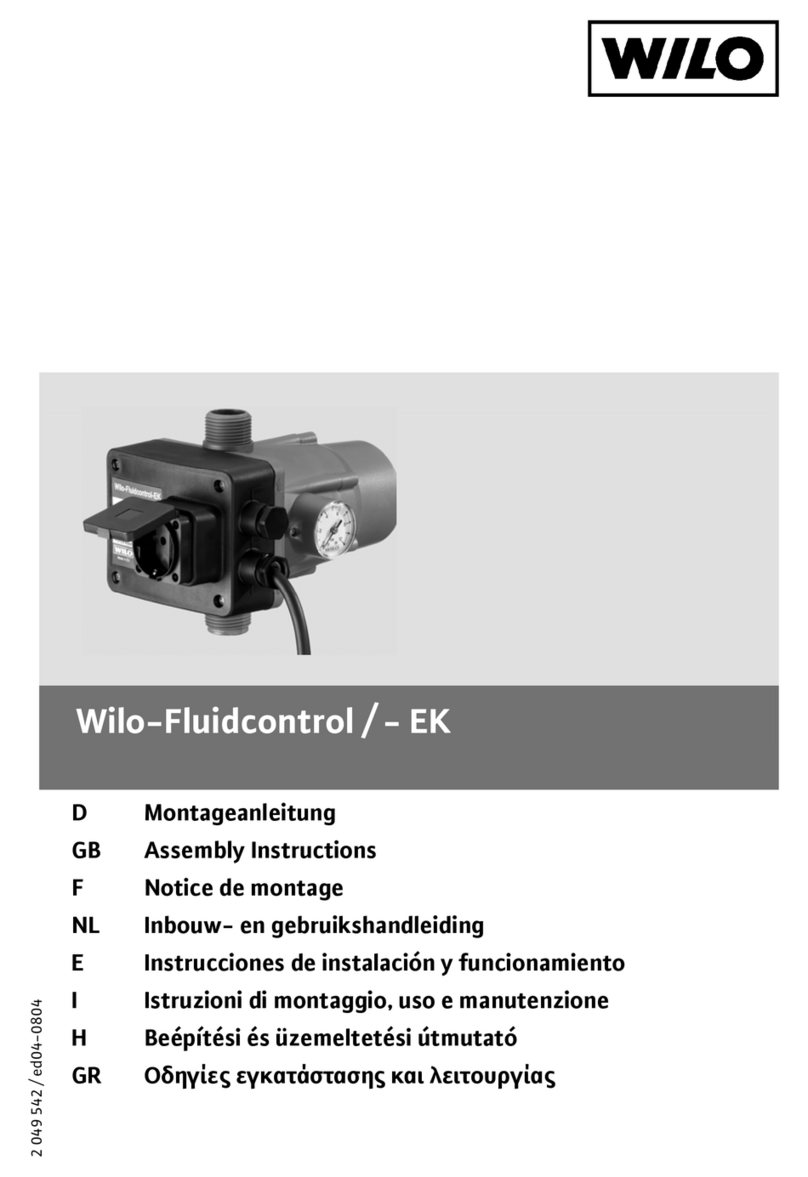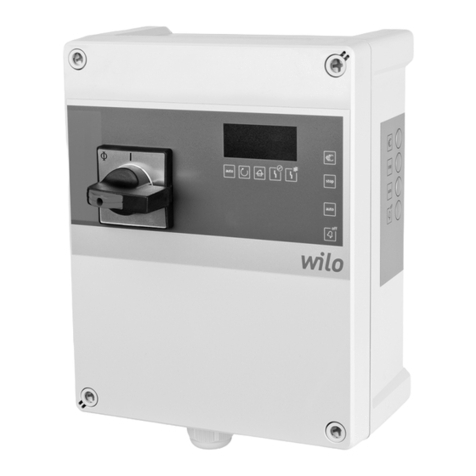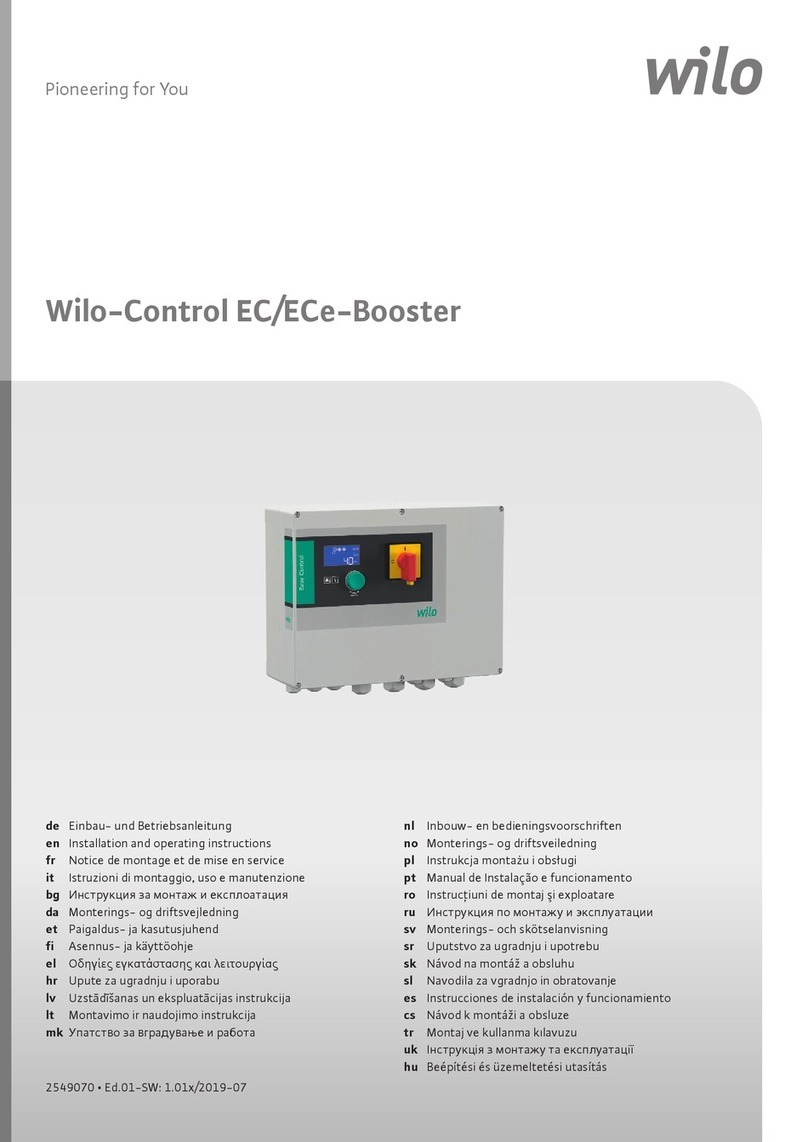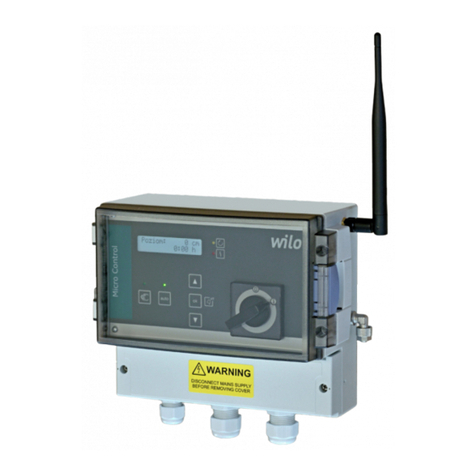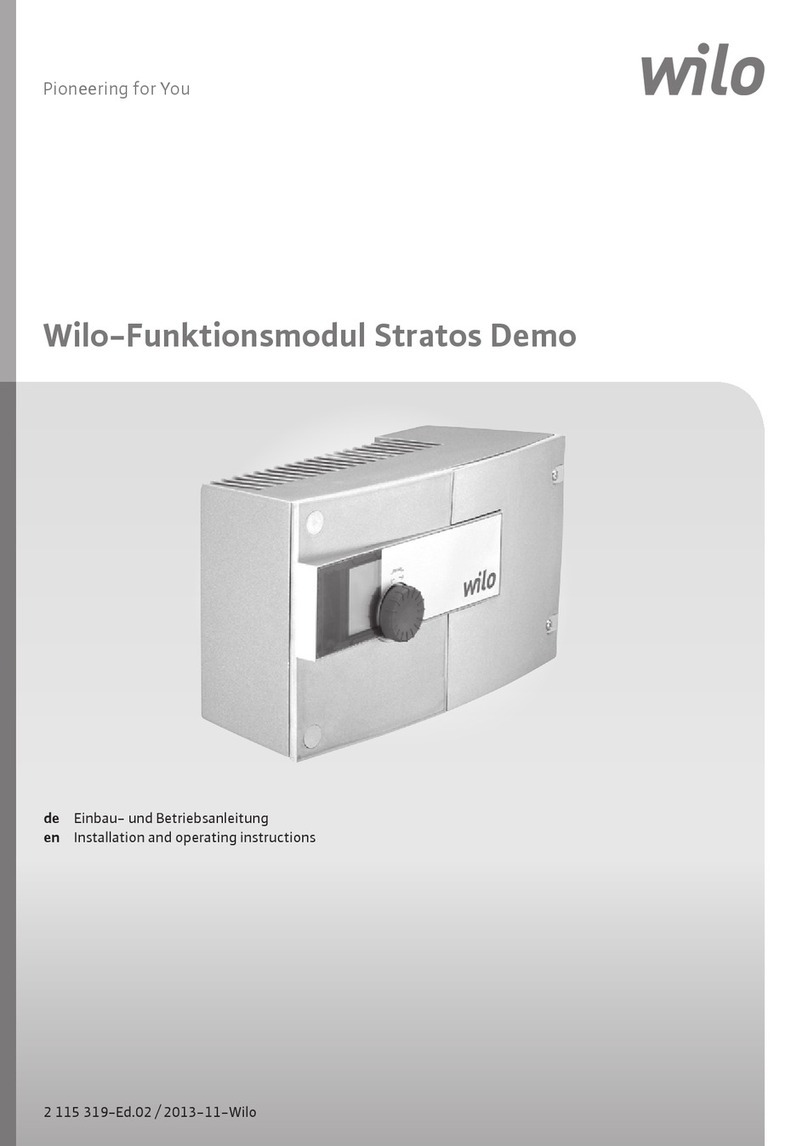
English
Installation and operating instructions Wilo-SC/SCe-HVAC 45
1 General ................................................................................................................................................. 46
2 Safety ................................................................................................................................................... 46
2.1 Symbols and signal words in the operating instructions ................................................................................ 46
2.2 Personnel qualifications ..................................................................................................................................... 47
2.3 Danger in the event of non-observance of the safety instructions .............................................................. 47
2.4 Safety consciousness on the job ....................................................................................................................... 47
2.5 Safety instructions for the operator ................................................................................................................. 47
2.6 Safety instructions for installation and maintenance work ........................................................................... 48
2.7 Unauthorised modification and manufacture of spare parts ......................................................................... 48
2.8 Improper use ........................................................................................................................................................ 48
3 Transport and interim storage ........................................................................................................... 48
4 Intended use ........................................................................................................................................ 48
5 Product information ........................................................................................................................... 49
5.1 Type key ............................................................................................................................................................... 49
5.2 Technical data ...................................................................................................................................................... 49
5.3 Scope of delivery ................................................................................................................................................. 49
5.4 Accessories .......................................................................................................................................................... 49
6 Description and function .................................................................................................................... 50
6.1 Description of the product ................................................................................................................................. 50
6.1.1 Function description ........................................................................................................................................... 50
6.1.2 Set-up of the control device .............................................................................................................................. 50
6.2 Function and operation ....................................................................................................................................... 51
6.2.1 Operating modes of the switchgear .................................................................................................................. 51
6.2.2 Control modes ..................................................................................................................................................... 54
6.2.3 Motor protection ................................................................................................................................................. 55
6.2.4 Operation of the switchgear .............................................................................................................................. 56
6.2.5 Menu structure .................................................................................................................................................... 62
6.2.6 Operation levels .................................................................................................................................................. 78
7 Installation and electrical connection .............................................................................................. 78
7.1 Installation ........................................................................................................................................................... 78
7.2 Electrical connection .......................................................................................................................................... 79
7.2.1 Mains connection ................................................................................................................................................ 79
8 Commissioning .................................................................................................................................... 84
8.1 Factory setting .................................................................................................................................................... 84
8.2 Checking the motor direction of rotation ........................................................................................................ 84
8.3 Adjusting the motor protection ......................................................................................................................... 85
8.4 Signal transmitters and optional modules ........................................................................................................ 85
9 Maintenance ........................................................................................................................................ 85
10 Faults, causes and remedies .............................................................................................................. 85
10.1 Fault display and acknowledgement ................................................................................................................. 85
10.2 History memory for the faults ........................................................................................................................... 86
11 Spare parts ........................................................................................................................................... 87
12 Disposal ................................................................................................................................................ 87
